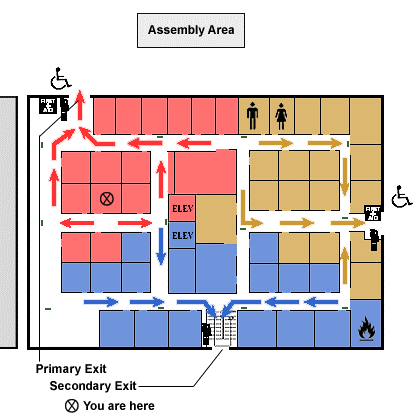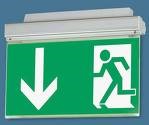
The principle on which means of escape provisions are based is that the time available for escape (an assessment of the length of time between the emergency starting and makes the means of escape from the workplace unsafe) is greater than the time needed for escape (the length of time it will take everyone to evacuate once an emergency has been discovered and a warning given). Regardless of the location of an emergency, once people are aware of it, they should be able to proceed safely along a recognisable escape route, to a place of safety.

In order to achieve this, it may be necessary to protect the route, i.e. by providing fire-resisting construction. A protected route will also be necessary in workplaces providing sleeping accommodations or care facilities. It might also be necessary to apply positive air pressure to an escape route to discourage smoke from entering in the event of an emergency.
As an employer, you must carry out a risk assessment to ensure that the means of escape remain adequate. If, as a result of your risk assessment, you propose making any changes to the means of escape, you should consult the fire authority before making any changes.
When assessing the adequacy of the means of escape you will need to take into account:

All workplaces must have clearly identified means of escape in the event of an emergency. These escape routes must be kept clear at all times to ensure that everyone can exit the workplace in the event of an emergency. Take care if placing notice boards in escape corridors/ routes as any paper on the board could be fuel in the event of an emergency. Arrangements must be conveyed to all those occupying the workplace and particularly to personnel such as fire wardens who will be assisting in overseeing any emergency evacuation. To understand what type of emergency evacuation routes might be needed, consideration should be given to the relevant building regulations.
Escape routes should be kept clear of all obstructions. Generally, escape routes should be at least one metre wide. The escape route should lead to a place of safety, normally outside and away from the building. Doors on escape routes must always be available for use without the use of a key.
Depending on the risk, push pads or panic bar devices should be used. Security should never take precedence over safety. Many devices are now available that satisfy both safety and security requirements. Where there are roller shutters or security grills fitted on an escape route, these must be open when persons are on the premises
When considering the escape routes from a place of work, an employer must be sure that he has evaluated the entire journey to a place of safety. All routes must be kept clear, including areas outside the premises that are included in the escape route.
Employees must be made aware of all possible escape routes and emergency drills should be used regularly to practice using them as part of emergency routines.
All premises should have an escape plan that clearly identifies the action that employees and others should take in the event of a fire. This may include duties for employees to check areas are clear, close doors and assist others.
Alternative Escape Routes
When specific escape routes are provided that do not form part of normal circulation routes it is important that employees are made aware of these. A management system should be in place to ensure these routes and exits are kept clear and usable.
Click here to view a video that explains the emergency evacuation plan and what to do.